- Overview
- Trip Outline
- Trip Includes
- Trip Excludes
- Gallery
- Reviews
- Booking
- FAQ
Majuli is the world's largest river island, nestled in the mighty Brahmaputra River in the Indian state of Assam. More than just a geographical marvel, it is a vibrant cultural heartland of Assamese Neo-Vaishnavite tradition, a unique monotheistic sect of Hinduism propagated by the 15th-16th century saint-scholar Srimanta Sankardeva.
The island is home to numerous Satras (Vaishnavite monasteries), established by Sankardeva and his disciples, which serve as crucial centers for religious practices, art, music, and dance. These Satras actively preserve ancient art forms like:
-
Sattriya Dance: A classical Indian dance form that originated in the Satras.
-
Bhaona: Traditional mythological plays, often performed with elaborate, handcrafted masks (like those from the famous Samaguri Satra).
-
Borgeet: Devotional songs.
-
Traditional crafts: Including unique pottery techniques (without a potter's wheel) and handloom weaving, particularly by the indigenous Mising community.
Majuli's landscape is characterized by lush greenery, tranquil water bodies, and paddy fields, reflecting an agrarian lifestyle closely intertwined with the river's rhythm. It's also a significant wetland habitat for various avian species, especially migratory birds during winter, making it a haven for birdwatchers.
However, Majuli faces a severe existential threat from extensive soil erosion caused by the turbulent Brahmaputra River. Its area has significantly shrunk over the decades, leading to concerns about its long-term survival and the preservation of its unique cultural landscape. Despite these challenges, Majuli remains a resilient and culturally rich destination, accessible primarily by ferry from Jorhat.
No details found.
Itineraries
Day 1
Arrival and Rest
Day 1: Journey to Majuli & Island Serenity
-
Morning (6:00 AM - 12:00 PM): Travel from Guwahati to Jorhat
-
6:00 AM: Depart from Guwahati early in the morning. The journey to Jorhat by road (private car/taxi or bus) takes approximately 6-7 hours.
-
Enjoy the scenic drive through the Assamese countryside, passing tea gardens and small towns. You might take a short break for breakfast or tea en route.
-
12:00 PM (Approx): Arrive at Jorhat. Head directly to Nimati Ghat, which is about 13 km from Jorhat town.
-
-
Lunch (12:30 PM - 1:30 PM): Lunch Near Ghat/En Route
-
Grab a quick lunch at a local eatery near Nimati Ghat or pack something from Jorhat town. Ferry wait times can vary.
-
-
Afternoon (2:00 PM - 3:30 PM): Ferry Crossing to Majuli
-
2:00 PM onwards: Board the public ferry from Nimati Ghat to Kamalabari Ghat in Majuli. The ferry ride across the Brahmaputra takes approximately 1 to 1.5 hours, depending on the river conditions. It's an experience in itself, offering vast river views.
-
3:30 PM (Approx): Arrive at Kamalabari Ghat, Majuli.
-
-
Late Afternoon (4:00 PM - 5:00 PM): Transfer to Accommodation & Check-in
-
From Kamalabari Ghat, take a shared auto-rickshaw or hired taxi to your pre-booked guesthouse, resort, or Satra accommodation (many are located around the Garamur or Kamalabari areas).
-
Check in, settle into your room, and take some time to freshen up.
-
-
Evening (5:00 PM Onwards): Rest & Island Ambiance
-
Relaxation: Use this time to rest and unwind after the long journey. Enjoy the peaceful, rustic ambiance of Majuli.
-
Gentle Stroll (Weather Permitting): If the rain subsides and you feel energetic, you could take a short, leisurely stroll around your immediate accommodation area to get a feel for the island's tranquility. Observe the traditional stilt houses and the lush green surroundings.
-
Dinner: Enjoy dinner at your guesthouse or a nearby local eatery, savoring traditional Assamese food.
-
Day 2
Sight Seeing and Activities
Day 2: Satras, Crafts & Island Birds
-
Morning (8:00 AM - 1:00 PM): Satra Exploration & Mask Making
-
8:00 AM - 9:00 AM: Enjoy a traditional Assamese breakfast at your guesthouse.
-
9:00 AM - 10:30 AM: Visit Auniati Satra, one of the largest and most prominent Satras. It's known for its extensive collection of traditional Assamese artefacts, royal robes, and the "Paalnaam" (a daily prayer recital). Observe the monastic lifestyle and cultural preservation efforts.
-
10:30 AM - 12:00 PM: Head to Samaguri Satra. This Satra is famous for its unique tradition of mask-making (Mukha Shilpa), used in the Bhaona (traditional mythological plays). You can witness artisans crafting these vibrant, expressive masks from bamboo, clay, and cloth. This is a fascinating indoor activity, perfect for a rainy day.
-
12:00 PM - 1:00 PM: Visit Garamur Satra. Known for its spiritual dance and the "Lakhsmi Pooja," it's another significant cultural hub. It also houses an old treasury.
-
-
Lunch (1:00 PM - 2:00 PM): Local Delicacies
-
Enjoy lunch at a local restaurant or your guesthouse, sampling more of Majuli's unique cuisine, which often includes fresh river fish, local vegetables, and distinctive preparations.
-
-
Afternoon (2:30 PM - 5:30 PM): Pottery Village & Birdwatching (Weather Permitting)
-
2:30 PM - 3:30 PM: Travel to Salmora Village. This village is renowned for its unique, ancient tradition of pottery making without a potter's wheel. Witness the skilled artisans molding clay by hand, often using bamboo and wooden tools. This is another great cultural insight, much of which can be observed under cover.
-
3:30 PM - 5:30 PM: Birdwatching (Focus on Resident Species) & Island Drive:
-
Important Note for July: Migratory birds are not present during monsoon. However, Majuli is home to numerous resident bird species.
-
Areas to Explore: Ask your local guide or guesthouse owner for accessible areas that are not heavily waterlogged. Good spots might include:
-
Around the Satras: Many Satras have ponds and trees that attract local birds.
-
Paddy Fields: Areas around paddy fields might host egrets, herons, kingfishers, and other wetland birds.
-
Riverbanks (if safe): While the Brahmaputra is swollen, certain higher banks might still offer glimpses of riverine birds.
-
-
What to look for: Keep an eye out for Little Egret, Intermediate Egret, Pond Heron, various kingfishers, Drongos, Mynas, Crows, and local sparrows and weavers.
-
Flexibility is Key: If it's raining heavily, this activity might be curtailed. Enjoy a scenic drive through the island's interior, observing the unique Mising stilt houses and the lush monsoon greenery.
-
-
-
Evening (6:00 PM Onwards): Relax & Cultural Interaction
-
Return to your guesthouse.
-
Spend a relaxed evening. If your guesthouse is connected to a Satra or local community, you might have the opportunity for informal interactions or learn more about their daily life.
-
Enjoy dinner and reflect on the day's cultural and natural discoveries.
-
Day 3
Cultural Site Visit
Day 3: Deep Dive into Culture, Crafts & Departure
-
Morning (8:00 AM - 12:30 PM): Satra Exploration & Dedicated Souvenir Hunt
-
8:00 AM - 9:00 AM: Enjoy your final Assamese breakfast on Majuli.
-
9:00 AM - 10:30 AM: Visit Uttar Kamalabari Satra. This Satra is particularly renowned for its preservation and promotion of Sattriya dance and music. If you're lucky, you might witness students practicing these classical art forms. The serene ambiance and commitment to the arts make it a unique cultural experience.
-
10:30 AM - 12:30 PM: Souvenir Shopping Extravaganza:
-
Head to the main market areas around Kamalabari or Garamur. These areas have several shops catering to tourists.
-
Focus on Local Crafts:
-
Masks: If you loved the masks at Samaguri Satra yesterday, you might find smaller versions or more intricate pieces for sale.
-
Bamboo & Cane Products: Majuli is famous for its bamboo and cane crafts. Look for decorative items, small furniture, or utility products.
-
Mising Handlooms: The Mising tribe on Majuli is known for its vibrant hand-woven textiles. Look for Mekhela Sadors (traditional Assamese dress), shawls, stoles, or bags with unique tribal motifs. Many self-help groups or small village shops might sell these.
-
Pottery: You might find smaller pottery items from Salmora Village available in these shops.
-
Local Food Products: Consider buying local rice varieties, traditional sweets (pitha), or other unique Assamese food items if available.
-
-
-
-
Lunch (12:30 PM - 1:30 PM): Final Island Flavors
-
Enjoy your last lunch on the island at a local eatery, perhaps trying a dish you haven't yet.
-
-
Afternoon (2:00 PM - 4:00 PM): Final Cultural Glimpse & Departure Preparation
-
2:00 PM - 3:00 PM: Bengenati Satra (Optional, if time permits): If you have time before heading to the ghat, visit Bengenati Satra. It's known for its display of historical artifacts, including royal attire and a unique collection of weapons used by Ahom kings. This offers a different historical perspective of the cultural heritage.
-
3:00 PM - 4:00 PM: Head back to your guesthouse, collect your luggage, and make your way to Kamalabari Ghat. Allow ample time, as road conditions can be unpredictable during monsoon.
-
-
Late Afternoon/Evening (4:30 PM onwards): Ferry to Jorhat & Onward Journey
-
4:30 PM (Approx): Board the ferry from Kamalabari Ghat back to Nimati Ghat, Jorhat.
-
From Nimati Ghat, you can then proceed to Jorhat Airport (Jorhat Airport is relatively close to Nimati Ghat) for your flight, or to Jorhat Railway Station/Bus Stand for onward travel to your next destination.
-
No details found.
No details found.
In Silver package only sight seeing is included.
In Gold package sight seeing and fooding is included.
In Diamond package, sight seeing, fooding and stay is included.

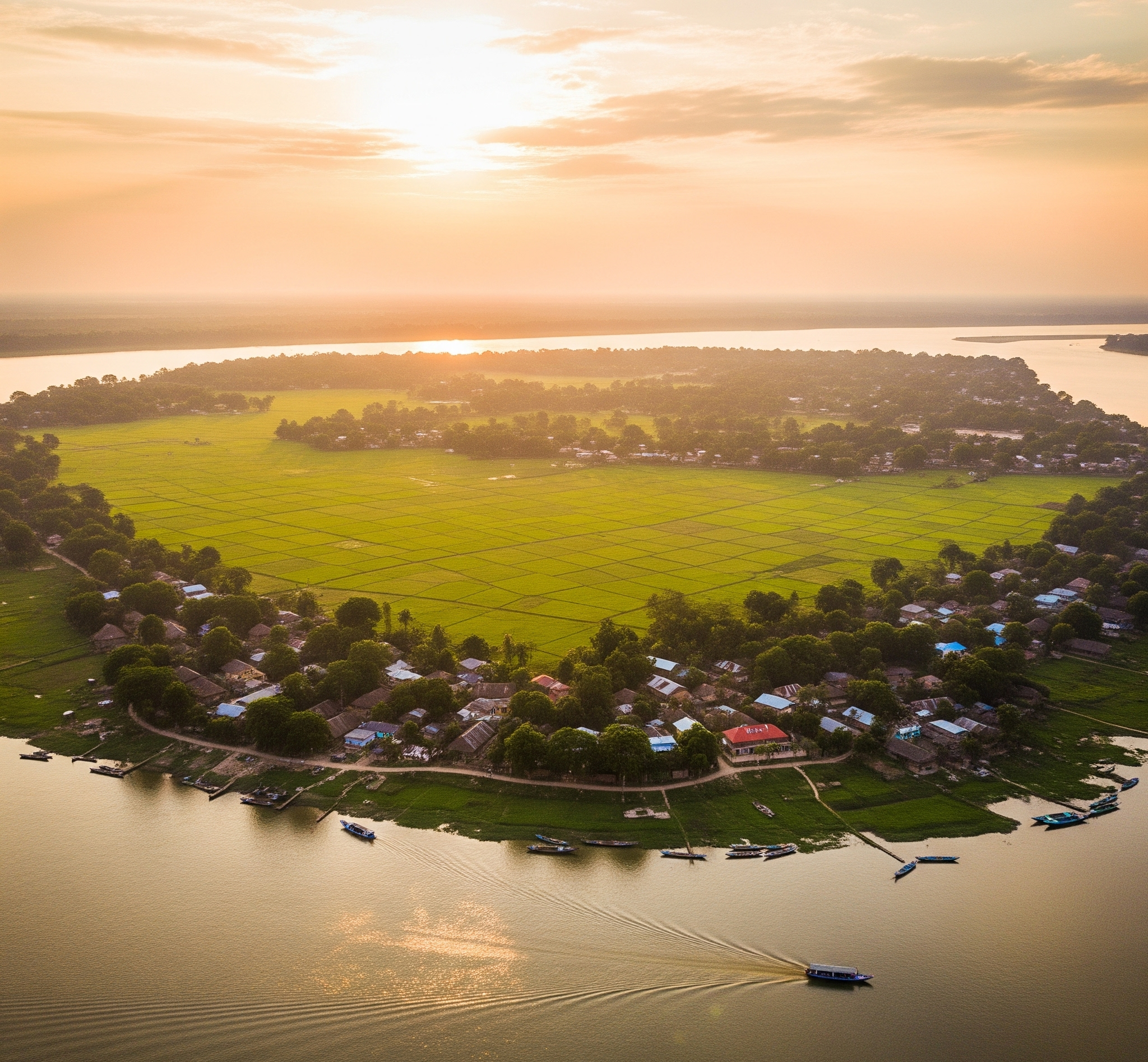
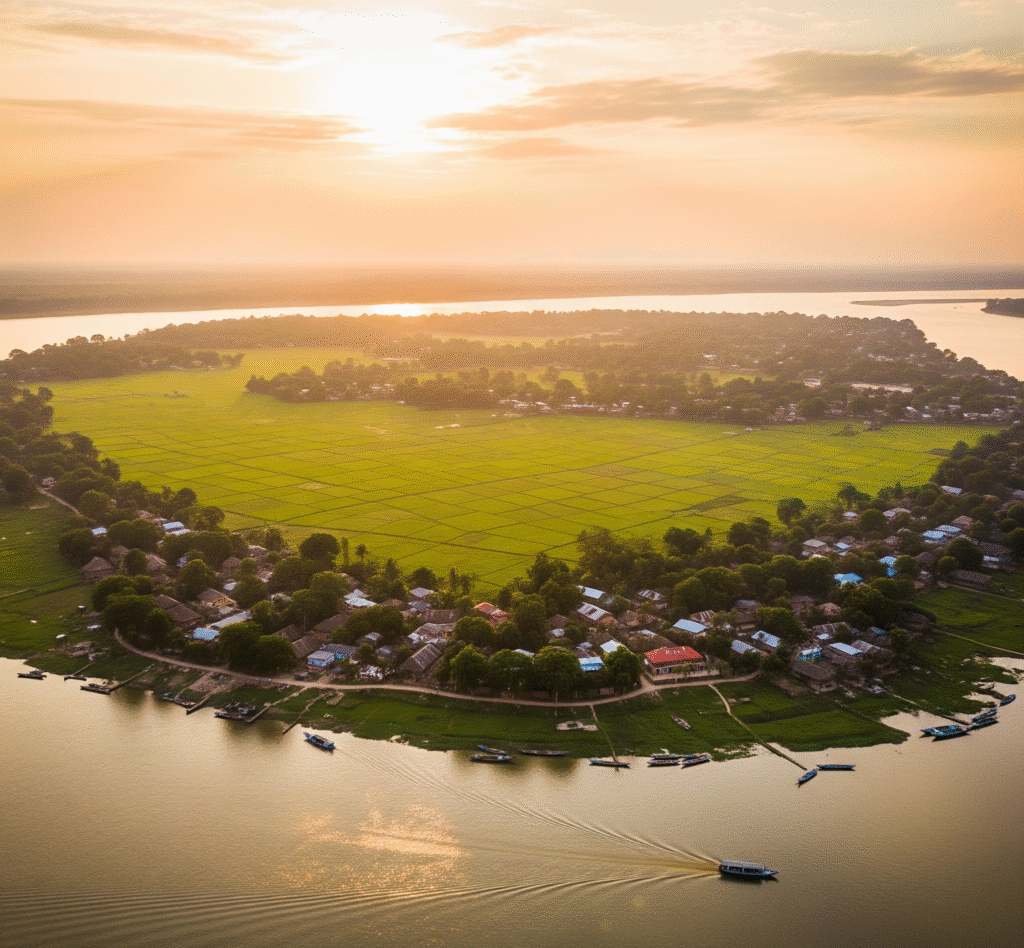
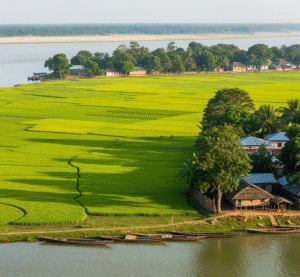
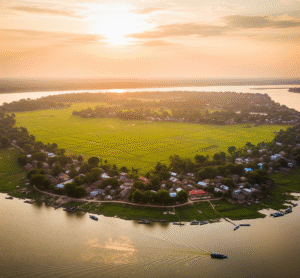
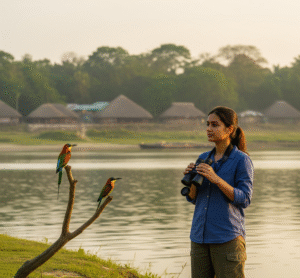
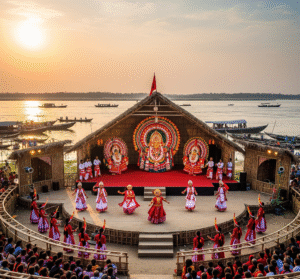
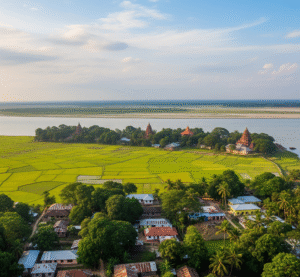
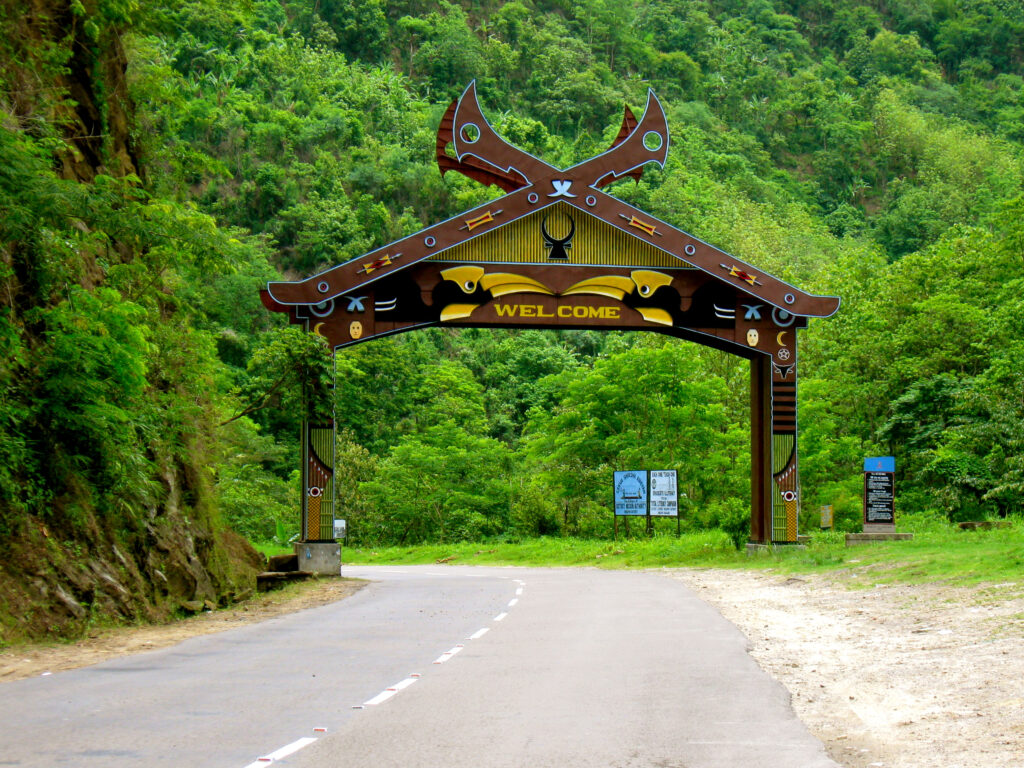

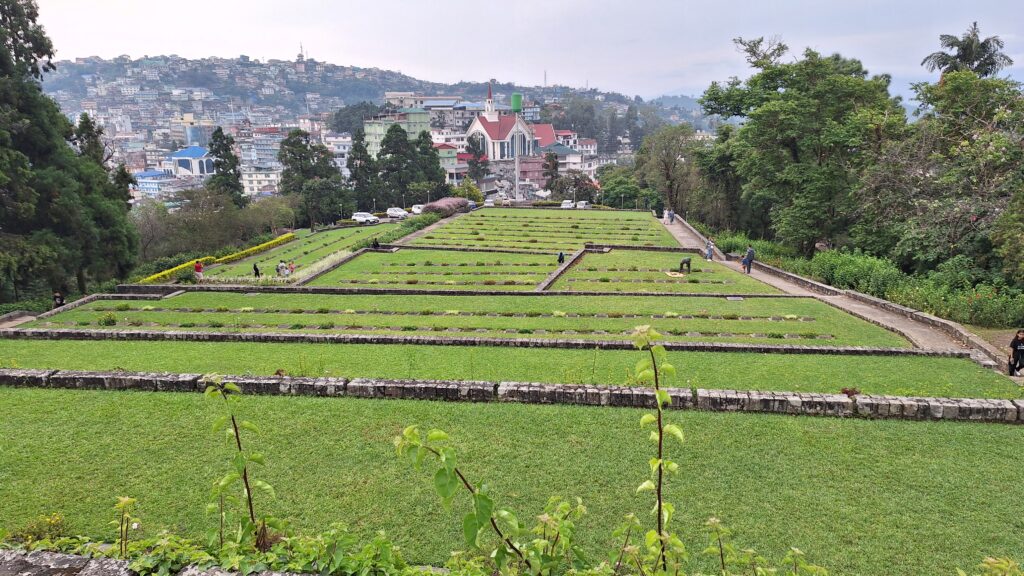
There are no reviews yet.